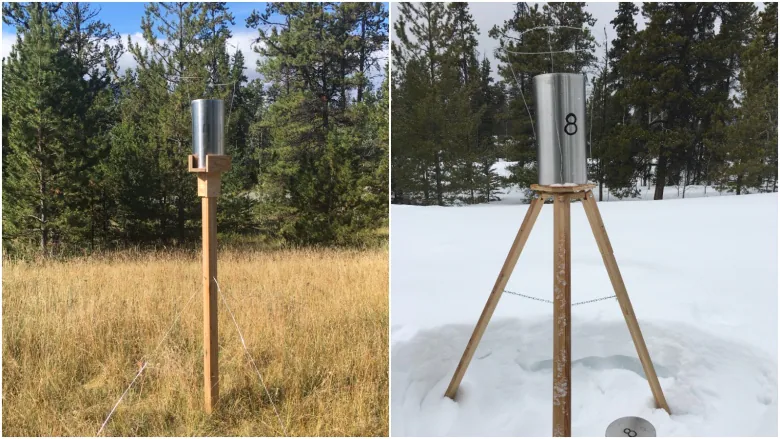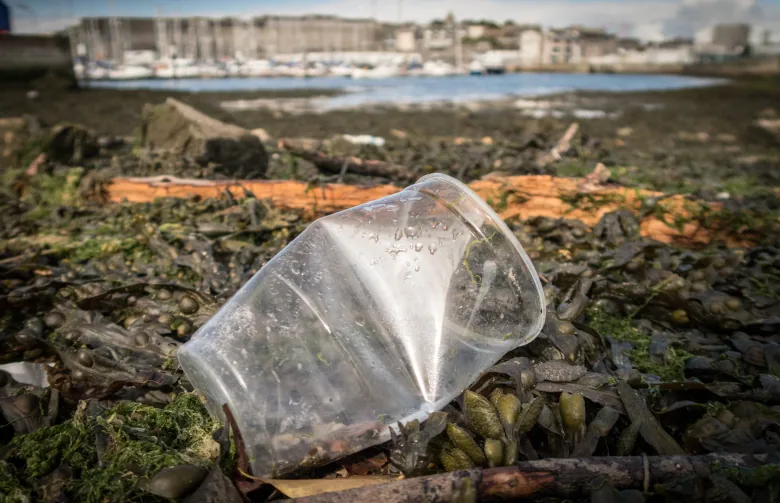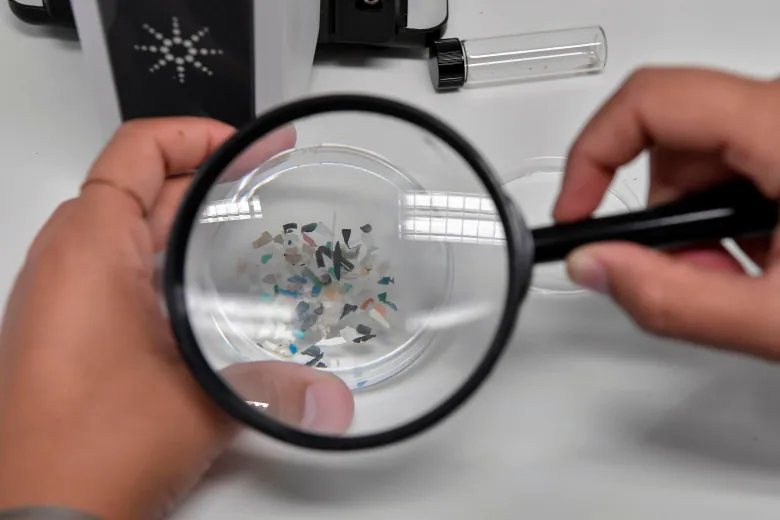Microplastic pollution is usually associated with the ocean where it’s been widely studied, but new research shows those tiny particles can be found in the air as well, even in the Yukon.
A team of researchers at Yukon University have been monitoring the amount of microplastics being deposited from the atmosphere into the air around Whitehorse over the past two years.
To do this, they built metal containers, similar to fly traps, and filled them with ultra-purified water. When tiny particles fall out of the atmosphere and into the container, they get trapped in the water.
The microplastic collectors, which conform to international standards of dust fallout collection, were placed in four locations around Whitehorse and swapped out monthly to get continuous data.

Researchers then filtered the water using a micrometer fiberglass filter. After counting the microplastics visually under a microscope, they were able to estimate the quantity of microplastics being deposited in different areas of the city.
This study makes Whitehorse one of the only cities in the world to measure microplastic deposition. The study is currently undergoing the peer review process.
Microplastics ‘in everything, basically’
John Postma, lead author of the study and instructor of Math, Physics and Statistics in the Student Success Division at Yukon University, said he decided to work on this study because very little research has been done on atmospheric microplastic pollution.
“There was a lot of media coverage and scientific publications on microplastic pollution in the oceans and in the water supplies,” said Postma.
“But everywhere humans have looked, we have found microplastics. Tops of mountains, bottoms of the ocean, in our rivers, in our guts, in our cells, in everything, basically.”
Airborne microplastic takes many forms and comes from many different sources, according to Postma, but a key contributor is discarded plastic waste. Since plastic biodegrades very slowly, it just fragments into smaller pieces that can be carried by air currents.

Once in the atmosphere, microplastics can travel long distances. Microplastic fibres have been found in the most remote environments in the world.
Postma suspects about a quarter to half of the microplastics his team captured are produced by the city of Whitehorse.
Janice Brahney, a Canadian microplastics researcher not involved with the study, said that cities do produce a lot of microplastics, but those plastic particles doesn’t necessarily reach the atmosphere as buildings can block wind currents.
Quirks and Quarks8:06Plastic pollution is all over the arctic
Plastic waste, particularly in the form of tiny particles called microplastic, has become ubiquitous in the Earth’s environment, and even in the remote Arctic. A new study by an international team, including Jennifer Provencher, a research scientist with Environment and Climate Change Canada, has looked at what we know about its prevalence in the north, where it’s coming from, and what we can do about it. Their study was published in Nature Reviews Earth & Environment.
Brahney also said the method Postma and his team used shouldn’t be seen as a way to measure the amount of microplastics present in the air. Rather, his method measures the deposition of these particles from the air.
“Whether or not a particle that’s in the air actually gets deposited, has a lot of variables associated with it – the particle size, the density, the wind conditions and things like that,” Brahney said.
She said deposition data is still very useful to study the movement of different atmospheric components into the terrestrial environment.
How microplastics make their way to the atmosphere
Brahney, an associate professor of watershed sciences at Utah State University, was behind another study that investigated the sources of airborne plastic and how the plastic entered the atmosphere.
Brahney used available information on sources and amounts of microplastics, as well as samples the team collected from 11 remote wilderness locations, to understand how microplastic is entering the atmosphere.
She and her team found three main ways this was happening.

“In the terrestrial environment, we found that highways were the most important mechanisms,” she said.
“The friction of car tires on the road surface produces the energy to move dust high up into the atmosphere. There’s a lot of dust and debris on the surface of a highway, including lots of tiny pieces of microplastics.”
Another way microplastic ends up in the atmosphere is from the movement of ocean waves. Microplastics floating on the surface of ocean water can end up in the atmosphere as the waves churn and bubble.
The third way microplastic particles ended up in the atmosphere was due to agriculture. Agricultural soils tend to contain a lot of microplastics as more farmers use plastic mulch and water that contains plastics from wastewater treatment plants.
Brahney said she’s “really glad” to see this study measure microplastic deposition in Whitehorse.
“We just need, as a research community, so much more information.”
Postma and Brahney said the long-term health effects of breathing-in microplastics are unknown.
Postma hopes to expand microplastic deposition measurement to other Yukon communities.
“It’s a low cost, low maintenance, microplastic collection system that can be used in remote areas,” he said.
